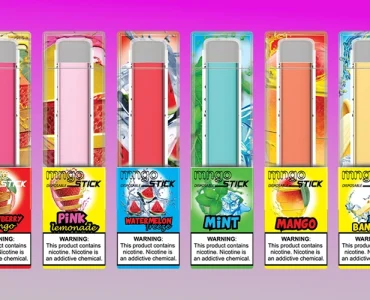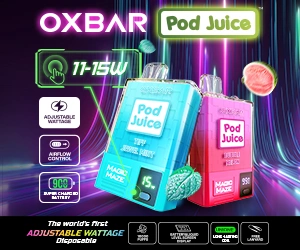The most recent National Youth Tobacco Survey has demonstrated that, contrary to recent claims, the ‘epidemic’ of youth vaping has seen a significant decline. The survey findings reveal many interesting points, some of which are raised as a result of selective statistical wordplay.
Several factors come into play with this latest batch of youth vaping figures. While it should be seen as good news, the truth is that institutional myopia (or ‘short sightedness’ if you prefer) is likely to win over facts.
What does the recently released NYTS survey actually show?
In short, the NYTS shows that youth vaping has been at its lowest level since 2014. The data shows that in 2021, 11.3% of high school students had vaped. Compared to the previous year’s survey, that is a reduction of 8.6%.
It is important to note that this figure isn’t talking exclusively about regular youth users.
And no, it isn’t the case that over one in ten high school students are what most would describe as ‘vapers’.
The figure quoted above is part of a greater ‘catch all’ term. The use of the word ‘ever’ is particularly important. “Ever E-cigarette use” is an important distinction to understand. “Ever” as in “have you ever?”.
Why is this so important?
Because it implies that people who have ever tried an e-cigarette are counted among those who vape long term. This term includes a single puff ‘just to try’, as many youths are tempted to do with a whole manner of different things.
In 2018 youth vapers (as a result of ‘have you ever’ style questions) were recorded to be 20.8%, leading Scott Gottlieb to issue an emotive statement, stating things such as:
- “We didn’t predict what I now believe is an epidemic of e-cigarette use among teenagers.”
- “I now have good reason to believe that it’s reached nothing short of an epidemic proportion of growth.”
- “E-cigs have become an almost ubiquitous ‒ and dangerous ‒ trend among teens.”
According to the statistics, what prompted this declaration of an ‘epidemic’ was an increase of 9.1% in youth ‘have you ever-vapers’ from the previous year. Considering that the reported use of ‘ever vapers’ has been shown in this year’s survey to have reduced by a similar percentage, and compared to an all-time high of 27.5% in 2019, making the drop in numbers even more significant (a reduction of 16.2%) It is safe to say that the youth ‘epidemic’ is well and truly over (if it ever existed in the first place).
Percentages of percentages: the need for caution
Recent times have shown that while statistics should, in theory, be ‘black and white’, artistic license with numbers allows for almost any agenda to be pushed or promoted.
The truth is that statistics can be misleading.
Want an example?
Suppose you are fortunate enough to have a nose. In that case, you have more noses than the mean worldwide average, statistically speaking, of course.
Do you see what we mean?
The FDA has been using selective statistics and using deliberately misleading language to lead the charge against vaping.
Here’s an example:
ICYMI: A report released from @FDATobacco and @CDCGov shows >2 mil. U.S. middle and high school students reported currently using e-cigarettes in 2021, with >8 in 10 using flavored e-cigarettes. The report was based on data from the 2021 NYTS. https://t.co/K8hPgmq7k3 pic.twitter.com/yDEfTLG9Nz
— FDA Tobacco (@FDATobacco) October 14, 2021
So, there are two million youths vaping today, right?
No.
There’s a difference between “used” as in “have you ever used?” and “using” as in “using right now”.
Fortunately, others spotted this massaging of the figures to suit an agenda:
Dr. Woodcock: It is REPREHENSIBLE that you choose to mislead the public in this way. Adult vapers can read the NYTS update too. Why not tell the truth?
US teen vaping has dropped 60% over the past 2 years. 3.1% vape daily.
Most “current use” is infrequent. NOT dependence.
— Charles A. Gardner, PhD (@ChaunceyGardner) September 30, 2021
Here’s another example:
Highlights from NYTS:
➡️In 2021, an est. 11.3% of high school students and 2.8% of middle school students reported current e-cigarette use. 1 in 4 high school students reported daily use.
➡️Among current youth users, disposables were the most commonly used e-cigarette device. pic.twitter.com/aJ8AYNUojt— FDA Tobacco (@FDATobacco) September 30, 2021
“1 in 4 high school students reported daily use.”
So, a quarter of all high school students are vapers, right?
Wrong again.
It is deliberately misleading, and as some pointed out, the numbers used in this context don’t actually add up.
This tweet is an outright lie. Really @FDATObacco? 1 in 4 high school reported daily use?
There are >15 million high school students in the US. 1 in 4 would be 3.75 million.
Tell me, how 1.75M more high school vape daily than total middle & high school students use combined?
— Robb Cabansag (@RobbCab) October 2, 2021
The true statistic (as the survey actually shows) should read, “1 in 4 of the 11.3% who ever vaped reported daily use”.
25% of 11.3 is 2.8%.
2.8% of all high school students is significantly different than a statement which makes it look like a quarter of the kids are vaping.
Is 2.8% a ‘trend’? Could it be described as ‘an epidemic proportion of growth’? The answer to both of these questions is a resolute no.
Other areas where the FDA gets it wrong
The FDA’s interpretation (and biased publication) of the data could be said to be misplaced for several other reasons.
A tweet made by FDA Tobacco stated that the data was incomparable to previous studies as a result of the Covid-19 pandemic: –
The results of the 2021 NYTS cannot be compared to results from previous surveys due to methodological changes. This NYTS was fully conducted online in a variety of settings due to the COVID-19 pandemic, while previous years’ studies were conducted in the classroom. pic.twitter.com/oila5lV2tm
— FDA Tobacco (@FDATobacco) September 30, 2021
There is an argument that because the kids were unable to access a standard school setting, they were not subject to the same social pressures that would normally have encouraged them to vape.
Except.
During the same period, the National Institute of Health reported that other traditional ‘teen experiments’, such as marijuana and alcohol, managed to remain unchanged.
The article itself states: –
“While pandemic-related restrictions limited social interactions, most students said they still had access to marijuana and alcohol.”
Yet no access to vapes that would appear (by the FDA’s reporting) to be utilized by the millions before the pandemic? Unlikely.
Does the FDA really promote reduction in youth vaping?
Another critical point may have gone unnoticed and revealed a flaw in the FDA’s integrity. Review the following tweet again: –
Highlights from NYTS:
➡️In 2021, an est. 11.3% of high school students and 2.8% of middle school students reported current e-cigarette use. 1 in 4 high school students reported daily use.
➡️Among current youth users, disposables were the most commonly used e-cigarette device. pic.twitter.com/aJ8AYNUojt— FDA Tobacco (@FDATobacco) September 30, 2021
Does anything stand out?
It’s written in bold on the right and occupies the majority of the pie chart.
Disposables and pod vapes accounted for 82% of the devices reportedly used by youth.
Why is that significant?
To date, the FDA has rejected Pre-Market Tobacco Applications (PMTA’s) for over one million vaping products.
The reason?
The standard response from the FDA has been as follows in its ever-growing list of Marketing Denial Orders: –
Yet, there are a select few who have been approved.
What is interesting about these products? They are producing exactly the kind of devices that are used by the overwhelming majority of youths.
When viewed as a whole, the FDA’s interpretation of the data and the subsequent decisions taken as a result seem to be misguided at best, corrupt at worst.
The bottom line
The FDA is harming public health by incorrectly cherry-picking figures, such as those given above, and publicizing these figures to misguide the public. Vaping is a safer alternative to smoking and has helped millions of adults globally quit for good.
The current wave of anti-vaping restrictions, when combined with the fact that the FDA has just approved the very type of product used by most youth vapers, is damaging adult public health by reducing the options available for people looking to quit. When you consider that the number of cigarettes sold increased from 202.9 billion to 203.7 billion in 2020, the FDA’s ‘epidemic’ may actually lie somewhere other than vaping.










Add comment